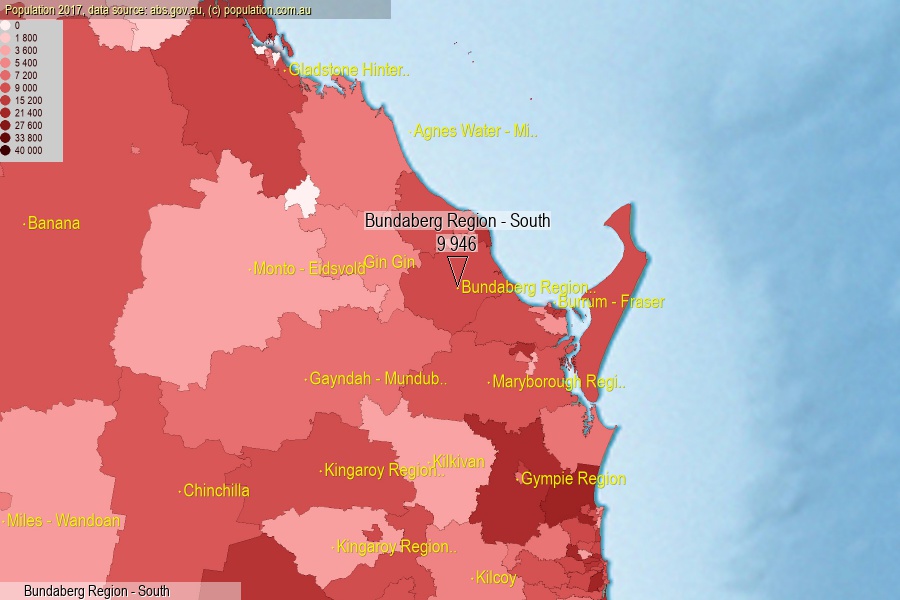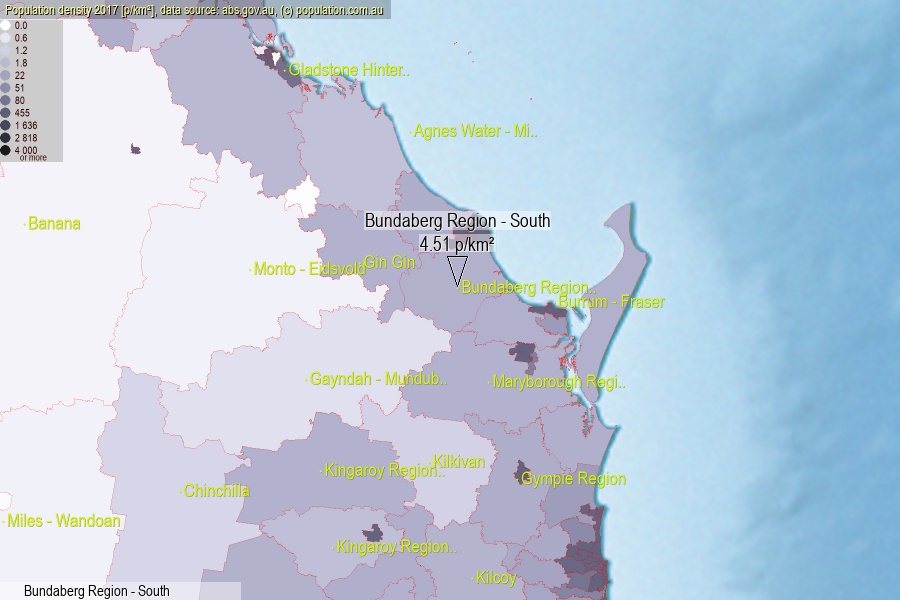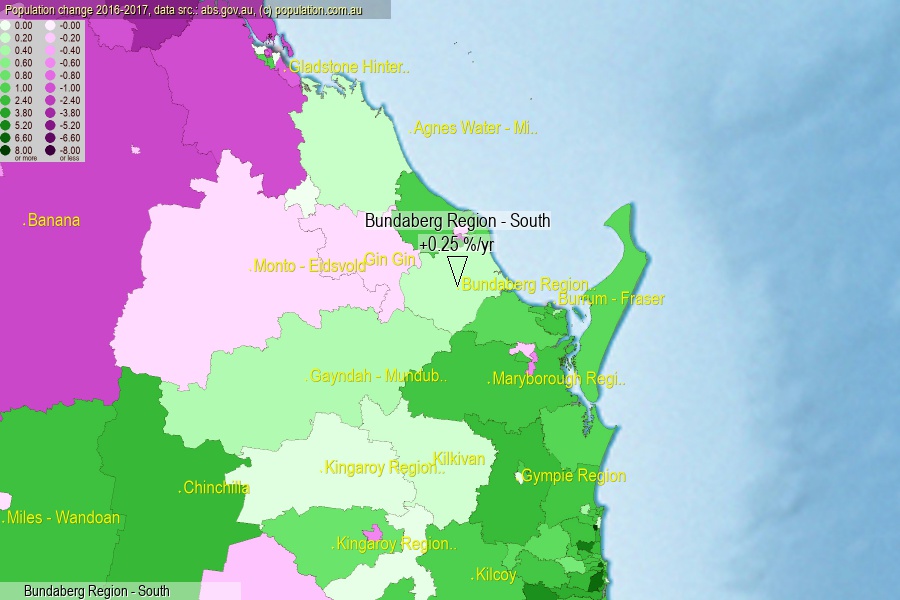 population.com.au
population.com.auLast official estimated population of Bundaberg Region - South (as Statistical Area Level 2) was 9 946 people (on 2017-06-30)[2]. This was 0.04% of total Australian population and 0.199% of QLD population. Area of Bundaberg Region - South is 2 207.20 km², in this year population density was 4.51 p/km² . If population growth rate would be same as in period 2016-2017 (+0.25%/yr), Bundaberg Region - South population in 2025 would be 10 148. [0]



Click to enlarge. Bundaberg Region - South is located in the center of the images.
Population [people], population density [p./km²] and population change [%/year] [2]
View borders » (new window) [4]
[1991-1992] +2.09 %/Yr.
[1992-1993] +3.22 %/Yr.
[1993-1994] +3.30 %/Yr.
[1994-1995] +2.84 %/Yr.
[1995-1996] +2.34 %/Yr.
[1996-1997] +1.48 %/Yr.
[1997-1998] +1.31 %/Yr.
[1998-1999] +1.01 %/Yr.
[1999-2000] +0.35 %/Yr.
[2000-2001] +0.87 %/Yr.
[2001-2002] +1.39 %/Yr.
[2002-2003] +1.05 %/Yr.
[2003-2004] +3.17 %/Yr.
[2004-2005] +2.14 %/Yr.
[2005-2006] +3.02 %/Yr.
[2006-2007] +2.22 %/Yr.
[2007-2008] +3.04 %/Yr.
[2008-2009] +3.16 %/Yr.
[2009-2010] +1.69 %/Yr.
[2010-2011] +1.27 %/Yr.
[2011-2012] +1.85 %/Yr.
[2012-2013] +0.25 %/Yr.
[2013-2014] -0.32 %/Yr.
[2014-2015] -0.02 %/Yr.
[2015-2016] +1.40 %/Yr.
[2016-2017] +0.25 %/Yr.
[0] Calculated with linear interpolation from officially estimated population
[1] Read more about SA2 and Australian Statistical Geography Standard (ASGS) on abs.gov.au
[2] Population data from Australian Bureau of Statistics (Population and density: 2017; change: 2016-2017)
[3] Digital Boundaries: Australian Statistical Geography Standard (ASGS) 2016.
[4] Border coordinates are simplifyed using Ramer-Douglas-Peucker algorithm.